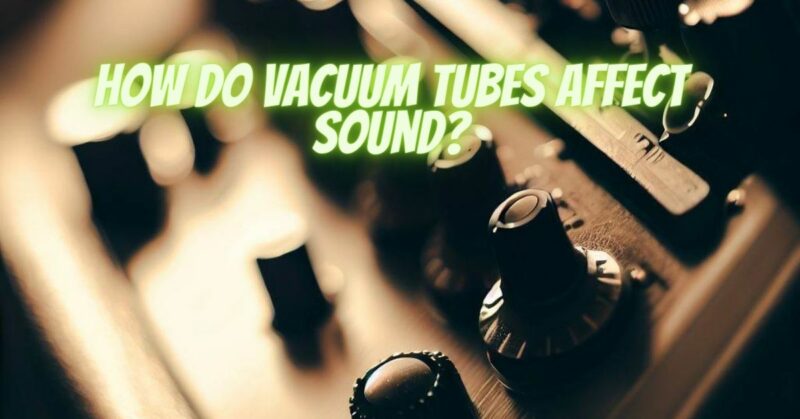Vacuum tube amplifiers, commonly known as tube amps, have captivated audiophiles and musicians for generations with their unique sound. These glowing glass cylinders are not just electronic components; they’re integral to the artistic and emotional experience of music. In this article, we’ll explore how vacuum tubes affect sound and contribute to the enchanting audio character that defines tube amplifiers.
- Harmonic Distortion:
The most prominent and defining effect of vacuum tubes on sound is harmonic distortion. Unlike solid-state amplifiers, which aim for a clean and linear amplification, tubes introduce pleasing harmonics to the audio signal. These additional harmonics, particularly second-order harmonics, create a warm, lush, and harmonically rich tone. This is often described as “tube warmth” and is a hallmark of tube amplifier sound.
- Soft Clipping:
When pushed to their limits, vacuum tubes exhibit soft clipping behavior. Instead of abrupt and harsh clipping, as seen in solid-state amplifiers, tubes gradually saturate and compress the audio signal in a smooth and musical way. This results in a pleasing distortion that enhances the overall sound quality.
- Non-Linear Response:
Vacuum tubes have a non-linear response to input signals. This non-linearity means they amplify different parts of the signal with varying degrees of intensity. The result is a tonal balance that is inherently musical, contributing to the tube amplifier’s unique sonic signature.
- Dynamic Range:
Tube amplifiers offer an impressive dynamic range, enabling them to reproduce both the subtlest and the loudest passages in music with finesse. This dynamic capability allows the listener to experience the full emotional impact of live performances and recordings.
- Smooth Frequency Roll-Off:
As tube amplifiers approach their maximum output, they exhibit a smooth frequency roll-off rather than a sharp cutoff. This smooth roll-off contributes to their ability to handle transients gracefully, preventing harsh or abrupt changes in sound.
- Natural Compression:
When driven hard, vacuum tubes introduce a natural compression effect into the audio signal. This compression enhances sustain, smooths out dynamics, and contributes to the musicality of the sound. Musicians often appreciate this effect for its ability to make instruments sound more expressive.
- Sonic Character:
Different types of vacuum tubes have distinct sonic characteristics. For example, EL34 tubes are known for their tight bass response and prominent midrange, while 12AX7 tubes are prized for their smooth and creamy distortion. Audiophiles and musicians can select tubes to tailor the sound to their preferences.
Vacuum tubes play a pivotal role in shaping the sound of tube amplifiers, introducing harmonic distortion, soft clipping, a non-linear response, and a wide dynamic range. These characteristics collectively create the captivating, warm, and emotionally engaging sound that audiophiles and musicians cherish. While solid-state amplifiers aim for accuracy and transparency, vacuum tube amplifiers embrace the art of sonic craftsmanship, weaving a musical tapestry that transcends mere technical fidelity. The unique and timeless appeal of tube amplifiers lies in their ability to elevate the listening experience to a realm where sound becomes artistry.


